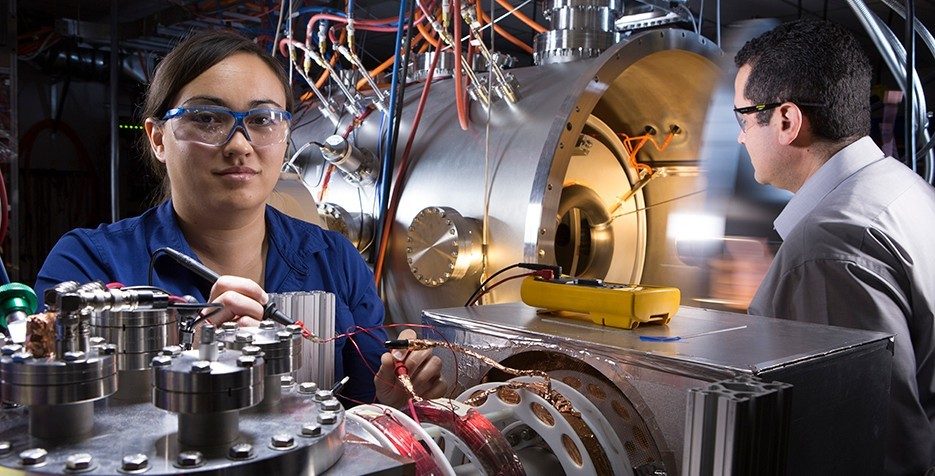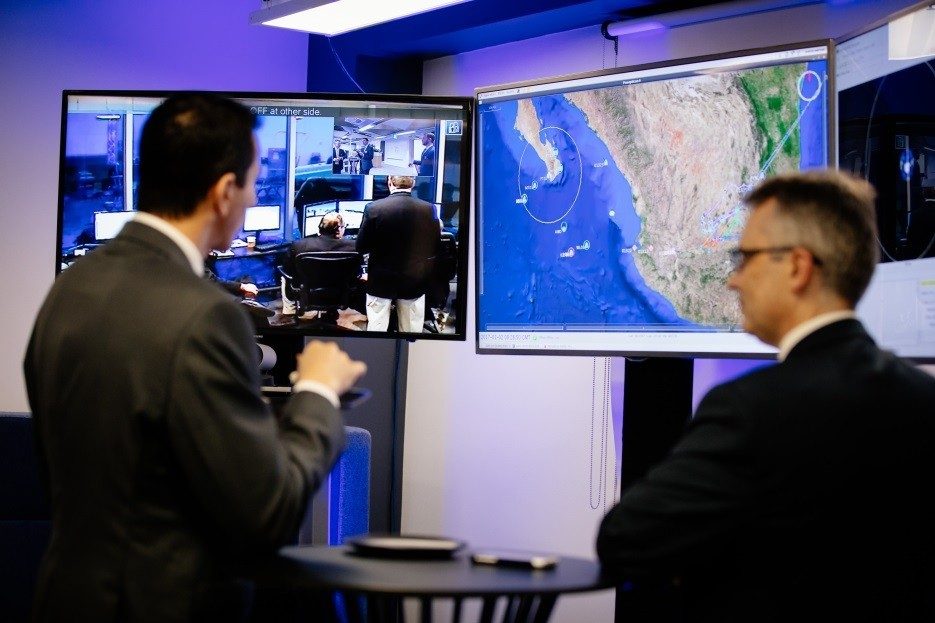Is That an Electron Gun?
When people think innovation, they think Silicon Valley. Lockheed Martin’s Advanced Technology Center (ATC) was developing ground-breaking technology in Silicon Valley when the creators of social media companies hadn’t yet been born. Today, that innovation continues in a very big, and very small way. The lab is outfitted with two of the world’s few atomic particle accelerators.
The accelerators are used to simulate harsh solar environments for testing sensitive space instruments that will ride aboard spacecraft headed for the farthest depths of the solar system.
To simulate the environment of the sun, the particle accelerator speeds protons to over 12 million miles per hour, or 2 percent the speed of light.
The lab is also home to the electron accelerator, which shoots electrons at 66 percent the speed of light, and the solar simulator, which delivers 2.5 suns-worth of light exposure. All these instruments are precisely positioned to less than 100 microns, many times smaller than the width of a human hair.
Other technology you will find have lofty names like UV arc lamps, electrostatic discharge equipment, reflectance measurement probes, and residual gas analyzer.
Communicating With Drones
Roughly 200 engineers and scientists make up Advanced Technology Laboratories (ATL) headquartered in New Jersey. The labs specialize in robotics, spectrum systems, cognitive computing, human systems and autonomy, and materials science.
One current project looks at ways for operators to communicate with unmanned aerial vehicles using a Theory of Mind approach.
Theory of Mind determines the intent of another person by understanding their thought processes. This can be very difficult and is easily subject to errors.
Computational Theory of Mind applies neuroscience and mental state models to help machines understand a human’s intent. Using this approach, an unmanned vehicle can understand its human leader’s objective—even when the two are unable to speak over normal communication channels.
When an operator is working with a team of unmanned aerial vehicles (UAVs), but neither can reach the other to communicate, the machines use Computational Theory of Mind to understand the operator’s objective. Working under the guidance of human intent, UAVs are able to safely complete their mission without real-time communication.
The Art of the Possible
In Melbourne, Australia, you will find a leading edge, multi-disciplinary Science, Technology, Engineering Leadership and Research Laboratory, STELaRLab for short. The lab focuses on the future—conceptualizing the challenges society will face and demonstrating the art of the possible in how they solve them.
The STELaRLab is exploring fields like hypersonics, machine reasoning, space systems, and C4ISR systems research.
One team is looking at how to design a UAV firefighting system by teaching a computer to analyze an image and automatically identify roads, buildings, water sources and trees, so that it can accurately plan and calculate a flight path that minimizes overflight risks to the community when automatically transporting water from a source to the fire.
In the same realm, another team is working on a power scavenging UAV to test the possibility of charging a drone via electromagnetic coupling from a powerline. This would allow the vehicle to cover long distances without needing a support team to manage battery changes or refueling.
What’s Next: WindLab
One of the most interesting things about wind is how little we actually know about it. In fact, we still can’t predict what any one gust will do as it ripples across the sky.
To this end, Lockheed Martin engineers are working with academics and artists to develop a WindLab that will help us understand how we harvest wind energy in way that’s aesthetically beautiful.
Imagine city skylines filled with micro-turbine panels that not only serve as a sustainable energy solution, but also function as an artistic display or communications center. This blend of functional art and science has the potential to transform the way we use wind energy around the world.






